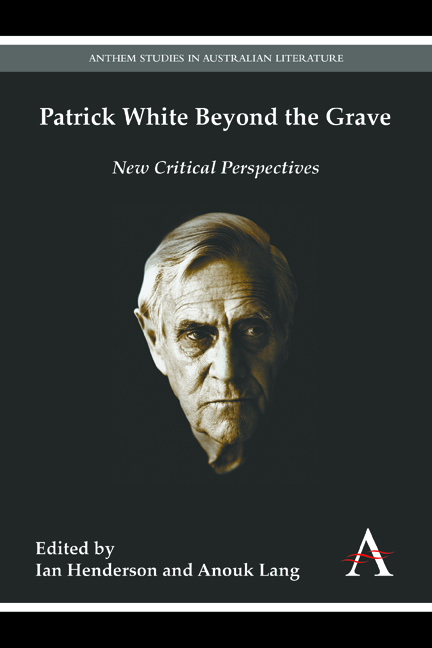Introduction
Published online by Cambridge University Press: 18 January 2018
Summary
There are moments when the critical revival of Patrick White seems rather a sustained defence of practising literary criticism at all in the twenty-first century; and in twenty-first-century Australia in particular. Even Simon During who, in Patrick White (1996), denounced his subject's relevance and, more recently, unfavourably compared White's talents with Saul Bellow's, did so principally to reassert the ‘crucial social importance’ of ‘literary judgement’ to contemporary culture. But the situation can be put far more positively, and democratically. The ‘revival’ is nothing less than a celebration of reading itself. In the hands of the revivalists, reading White becomes – for all of us – an act which is at once personal and social, individualistic and political, devotional and subversive, sacred and profane.
Here, then, is reading as fundamentally relativistic, forged at the interface of print (or screen) and skin, of mind (even soul) and body, of one's own and other bodies (individuated or clumped as clans and societies of various hues), of individual desire and social politics, of art and the world and of the human and its horizons. This is not to say that such testing of the potentialities of human communication cannot occur elsewhere, including in board rooms, across suburban dining tables, on TV screens, in sports grounds across Australia and in numerous other sites of ritual Australian life. It is rather to station this specific contest in, through, and about the performance of literary reading. Hence to enter the realm of Patrick White's writing is quite distinct from closeted solipsism, but rather to test momentarily in apparent silence the capacities of the Australian word.
Whether or not one believes in the epic myth of White's personal artistic odyssey, for so many readers his words (consciously arranged and/or intuitively assembled) occasion new ambitions for their own. Over the years, many critics have registered the moment they became ‘hooked’ on White for this very reason. It seems to matter little whether this is a surrender to prevailing intellectual fashion or ‘purely’ for the stimulation it induced. What matters is the action it occasioned: not only the further provocation of reading itself but also writing, and thereby the perpetual invocation of challenging ideas.
- Type
- Chapter
- Information
- Patrick White Beyond the GraveNew Critical Perspectives, pp. 1 - 14Publisher: Anthem PressPrint publication year: 2015

